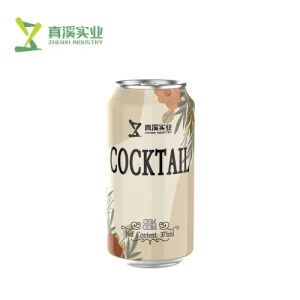The aluminum pop cans are not just for the drinks inside. They provide this by incorporating with various materials and coatings -- all which maintain the quality of the drink, keep it safe & taste good. Knowing what is inside these cans give us an idea of how solid they are and also gives a hint on environmental friendliness.
Aluminum is well liked in that it is light weight and very durable, making the aluminum from these cans perfect recycling grade material. Beverage cans are made of aluminum (about 95-98% content) with added manganese, magnesium and other elements to make the alloy stronger and formable. This construction permits the walls of cans to be light and thin but also strong, once again around 0.1 millimeters in thickness.
One of the most critical components to these aluminum beverage cans are their linings. This lining, a polymer such as epoxy or polyester creates a barrier between the beverage and aluminum. It has many functions not only to protect the flavor of your drink, as it stops anything from getting in and keeps aluminum form corroding. The lining is installed as a liquid and then cured, turning into seamless protection.
And a report from the Can Manufacturers Institute in 2020 said that although an internal coating on a can is generally less than 1 gram, it provides both beverage safety and seamless packaging. Its purpose is fundamental in all beverage types: from acidic sodas to neutral pH water and has the function of protecting taste or safety due to chemical reactions.

The range of the drink can be Soft drinks, Beer, Energy Drinks or Juices. Beverage type - Carbonation, Acidity and Shelf life Carbonated needs cans that can withstand at about 90 pounds per square inch, non-carbonated have lower pressure requirements. This discrepancy requires exact engineering and QC in order best to provide intact cans throughout all kinds of beverages.
Aluminum beverage can recycling Rates of aluminum cans have been increasing for the last three decades. According to Aluminium Association, Recycling of aluminium requires on 5% energy while producing new from raw material. One ton of aluminum saves 14,000 kWh a year, enough to power an average home.
David Suzuki, the Canadian environmentalist best known for The Nature of Things on CBC TV said it so succinctly: "Aluminum cans save almost 95 per cent of the energy needed to make aluminum from raw materials." This further highlights the environmental benefits of aluminum can use and recycling.
What makes aluminum cans such a common choice is also the cost-effectiveness of using them. Although the manufacturing and lining processes are sophisticated, its high recyclability rate (it can thus be recycled numerous times) plays a role in ensuring it is cost-effective. Aluminum cans are therefore made of an economically attractive packaging option for beverages.
Consumer choice even further underscores the utility of aluminum beverage cans. These coolers are lightweight which make their transportation convenient and they provide a tremendous protection for the items inside in order to keep beverages fresh out of reach from external factors. It is a popular choice among consumers because of the convenience of single-serving sizes and quick chill times for cans as well.
To read more about what is in this aluminum beverage can, click here Aluminum Beverage Cans From the advanced materials to the precision engineering, this sustainable packaging solution is more than an aluminum can for beverages.